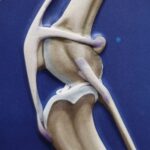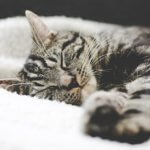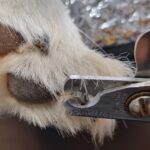What is it?
Whisker fatigue might sound made up, but is a real medical condition that some cats can face, and is also called Whisker Sensory Overload.
A cat’s whiskers are very sensitive and act like antennas that can detect and sending signals to the brain. They can be used for many sensory functions such as judging close up objects, measuring spaces for them to move through and noting air movements.
How does it happen?
If a cat’s food or water bowl is too small or deep, their whiskers will be constantly rubbing the sides when they eat and drink. This can cause constant sensory stimulation of the whiskers which can lead to a degree of discomfort, distress or in some cases a level of pain. If your cat is experiencing sensory overload of their whiskers it can lead to changes in their eating and drinking habits, as well as their behaviour.
Signs to look out for
Have you noticed any odd behavior in your cat during mealtimes? Check the list below to see if they could be experiencing whisker fatigue.
• Approaching the food bowl with caution, acting hungry, but also nervous
• Scooping or dropping food out of the bowl to eat off the ground
• Making a big mess around the bowl while eating or drinking
• Leaving food in the bowl, but continuing to act hungry
• Refusing to eat food left at the bottom of the bowl, but asking for more
• Acting aggressively toward other pets or people in the home
They may also prefer to drink from the shower or running tap rather than their water bowl.
It is important to note however that there can also be a number of health issues, and behavioural problems that can cause some of these signs and may need to be further assessed.
How can you help?
Use a Whisker Friendly Cat bowl.
If your cat appears to be healthy and is not eating, try providing a flat surface or a wide-enough bowl where its whiskers won’t touch the sides. There are several types of these bowls available from many pet stores and online. Some bowls also have ridges inside the bowl which stops food falling to the bottom. Stainless steel bowls are also preferred as they can help reduce the incidence of chin acne which has been associated with bacteria accumulating on some ceramic bowls.
When it comes to drinking options, most cats prefer a lip-less, large flowing water source. An automatic fresh water fountain might be optimal for your cat rather than a stale bowl of water. A flat bowl with low sides can also be suitable.
Whatever you do, don’t trim your cat’s whiskers. Trimming whiskers can reduce your cat’s perceptions of its environment, and alter it personality.





